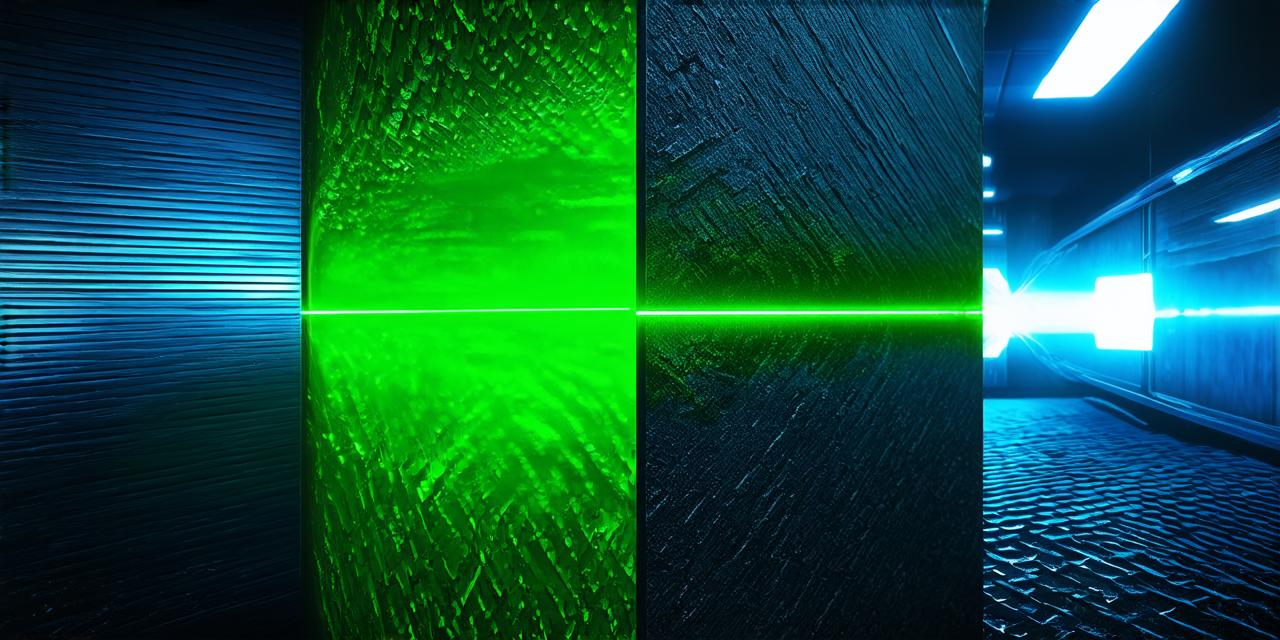Introduction:
Unreal Engine is a powerful game engine that has been used in the development of some of the most popular games today. It offers a wide range of features and tools that make it easy to create stunning visuals, immersive gameplay experiences, and realistic physics. In this article, we’ll explore the basics of Unreal Engine game development, covering everything from setting up your environment to creating interactive objects and characters.
Setting Up Your Environment:
The first step in Unreal Engine game development is to set up your environment. This involves creating a scene, adding lighting and materials, and configuring camera settings. You can create a scene by selecting the "World Composition" option in the menu bar or by using the built-in level editor. Once you have created your scene, you can add lighting and materials to enhance the visuals. Unreal Engine supports a wide range of lighting models, including point lights, spotlights, and directional lights. You can also create custom materials by combining different textures and properties. Finally, you can configure camera settings to control how players view the game world.
Creating Interactive Objects:
Interactive objects are an essential part of any game. They allow players to interact with the environment and complete tasks or challenges. In Unreal Engine, you can create interactive objects by using Blueprints or C++ code. Blueprints is a visual scripting tool that makes it easy to create interactive objects without writing any code. You can use Blueprints to create animations, add collision detection, and control object behavior. If you prefer to write code, Unreal Engine supports C++, which provides more advanced features and control over the game engine.
Creating Characters:
Characters are an important part of any game, as they bring the story to life and give players someone to connect with. In Unreal Engine, you can create characters using Blueprints or by importing models from 3D modeling software. If you prefer to use Blueprints, you can create animations, add collision detection, and control character behavior. If you import a model from 3D modeling software, you can add animations, textures, and other properties to make the character more realistic.
Adding Sound Effects and Music:
Sound effects and music are an essential part of any game, as they help create an immersive experience and set the tone for the game world. In Unreal Engine, you can add sound effects and music using the built-in audio system. You can import audio files in a variety of formats, including WAV, MP3, and OGG. You can also create custom audio effects using Blueprints or by writing code in C++.
Testing and Debugging:
Once you have created your game, it’s important to test it thoroughly to ensure that everything is working correctly. Unreal Engine provides a variety of tools for testing and debugging, including the built-in profiler, which allows you to monitor performance and identify bottlenecks. You can also use debugging tools to step through code and identify issues with your game logic.
FAQs:
Q: What is Unreal Engine?
A: Unreal Engine is a popular game engine used by professionals and hobbyists alike. It offers a wide range of features and tools that make it easy to create stunning visuals, immersive gameplay experiences, and realistic physics.
Q: How do I set up my environment in Unreal Engine?
A: You can set up your environment by selecting the "World Composition" option in the menu bar or by using the built-in level editor. Once you have created your scene, you can add lighting and materials to enhance the visuals. Unreal Engine supports a wide range of lighting models, including point lights, spotlights, and directional lights. You can also create custom materials by combining different textures and properties.
Q: How do I create interactive objects in Unreal Engine?
A: You can create interactive objects in Unreal Engine using Blueprints or C++ code. Blueprints is a visual scripting tool that makes it easy to create interactive objects without writing any code. You can use Blueprints to create animations, add collision detection, and control object behavior. If you prefer to write code, Unreal Engine supports C++, which provides more advanced features and control over the game engine.
